Sign up for the Starts With a Bang newsletter
Travel the universe with Dr. Ethan Siegel as he answers the biggest questions of all.
While sampling ancient, dry riverbed rocks on Mars, NASA’s Perseverance rover found something astonishing.

The rock shown here, discovered by NASA’s Perseverance Rover on Mars, contains leopard-like spots on a reddish rock located in Mars’s Jezero Crater in July of 2024. Sample analysis indicated organic molecules and reduction/oxidation reactions, which could serve as a potential biosignature. However, abiotic pathways to the production of these characteristics cannot be ruled out as of yet.
An unusual rock contained organic, carbon-bearing minerals.

This figure shows an aerial view of the path of exploration undertaken by NASA’s Perseverance Rover, including the important Bright Angel and Masonic Temple regions, which includes some unusual rock formations that warranted further investigation. Below, the view of that same region is shown in a NASA Perseverance panoramic view.
Reaction fronts were enriched with iron, phosphorous, and sulfurous compounds.

This four-panel graph shows the reduction/oxidation processes that occurred in the Bright Angel and Masonic Temple regions within Jezero Crater, as explored by NASA’s Perseverance Rover. The discovery of organic molecules and these sets of reactions hint at, but do not prove, the possible presence of ancient biological activity on Mars.
That organic carbon must have participated in post-depositional reduction/oxidation (redox) reactions.
Many call this a potential biosignature, accompanied by extraordinary claims about Martian life.

NASA’s Perseverance rover puts its robotic arm to work around a rocky outcrop called “Skinner Ridge” in Mars’ Jezero Crater. Numerous organic compounds have already been identified in the Martian soils present at this location by Perseverance, but “organics,” despite the implications of that word, usually have nothing to do with life at all; it simply indicates a molecule containing a carbon-hydrogen bond. As of 2025, there have been no crewed attempts at landing on Mars, and promises toward that end are incongruent with current technology.
But finding “organics” anywhere says little-to-nothing about life.
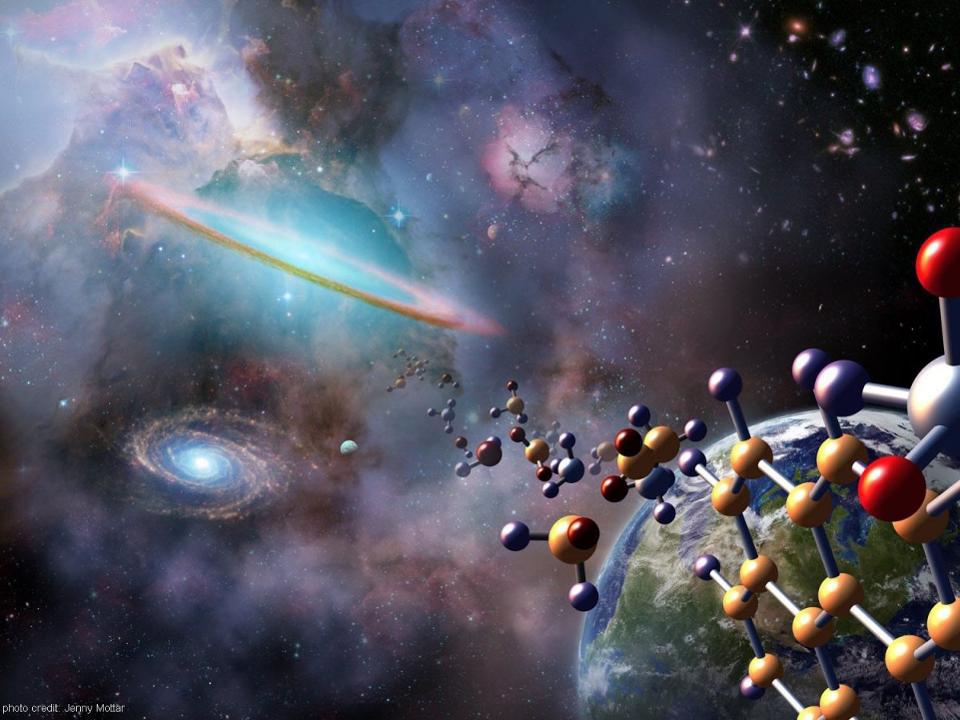
The way that atoms link up to form molecules, including organic molecules and the molecules involved in biological processes, is only possible because of the Pauli exclusion rule that governs electrons, forbidding any two of them from occupying the same quantum state. Organic molecules are found practically everywhere that heavy elements, including the element carbon, is found, from asteroids to interstellar dust clouds to star-formation regions to protoplanetary disks and more.
Credit: NASA/Jenny Mottar
In common parlance, “organic” is synonymous with life: implying creation through biological processes.

Enceladus is a moon of Saturn made primarily of water-ice, which ejects plumes made of water vapor, ice particles, and organic chemical compounds from it. About 30% of those emissions feed Saturn’s E-ring, while the remaining 70% goes elsewhere into the Saturnian system. Although we typically use “organic” to refer to the results of life processes, most of the Universe’s “organic” compounds have origins that did not involve life at any stage.
Credit: NASA, ESA, CSA, Geronimo Villanueva (NASA-GSFC); Processing: Alyssa Pagan (STScI)
But in science, an “organic” molecule is just a carbon atom bonded to almost any other atom.
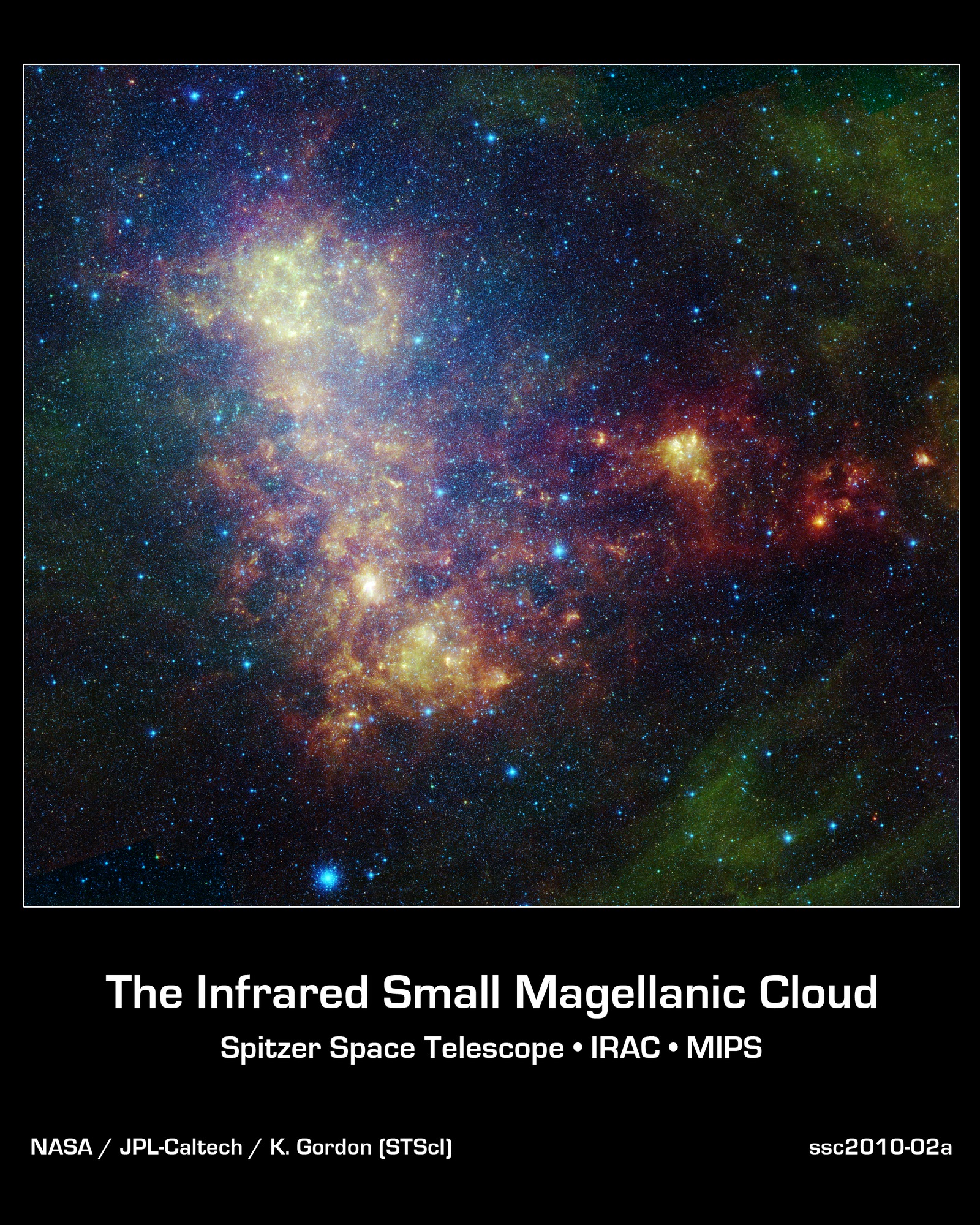
This infrared portrait of the Small Magellanic Cloud, located just 199,000 light-years away, highlights a variety of features, including new stars, cool gas, and quite spectacularly (in green) the presence of polycyclic aromatic hydrocarbons: the most complex organic molecules ever found in the natural environment of interstellar space. A molecule is classified as organic not if it arose from life processes, but merely if it contains a carbon atom bonded to another atom, such as hydrogen.
Credit: NASA/JPL-Caltech
“Organic molecules” include methane, cyanide, benzene, and alcohols.
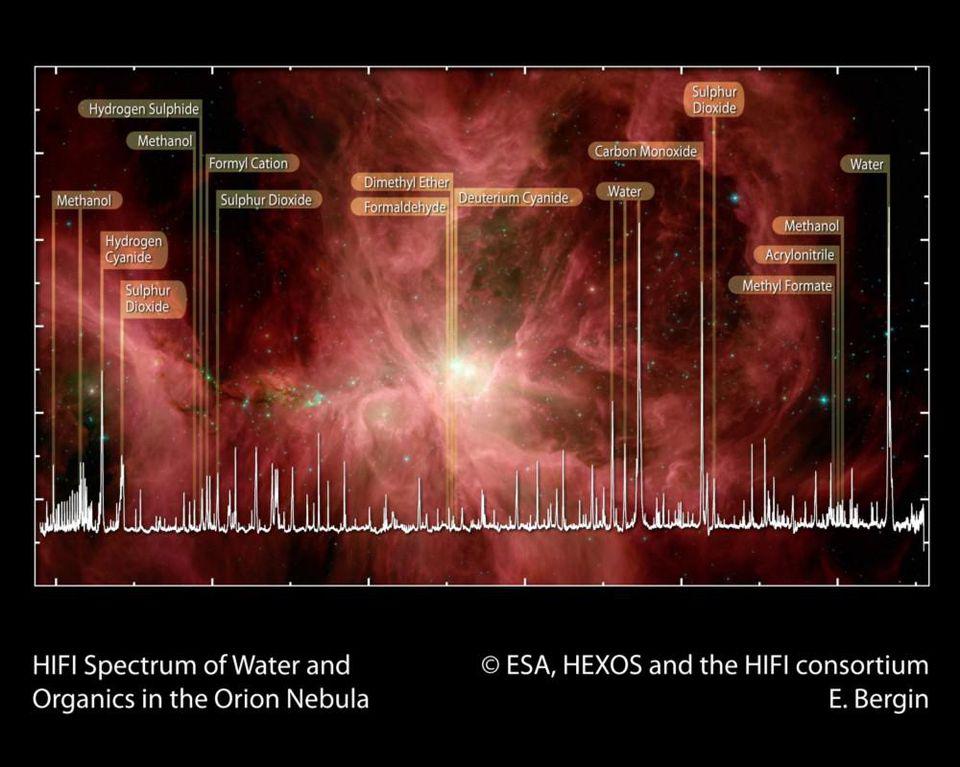
The raw ingredients that we believe are necessary for life, including a wide variety of carbon-based molecules, are found not only on Earth and other rocky bodies in our Solar System, but in interstellar space, such as in the Orion Nebula: the nearest large star-forming region to Earth.
Carbon is the 4th most abundant element in the Universe, behind only hydrogen, helium, and oxygen.

The elements of the periodic table, and where they originate, are detailed in this image above. While most elements originate primarily in supernovae or merging neutron stars, many vitally important elements are created, in part or even mostly, in planetary nebulae, which do not arise from the first generation of stars. Hydrogen is the most abundant element, followed by helium, then oxygen, and carbon after that.
Credit: NASA/CXC/SAO/K. Divona
256 unique organic compounds have been found in interstellar dust clouds.
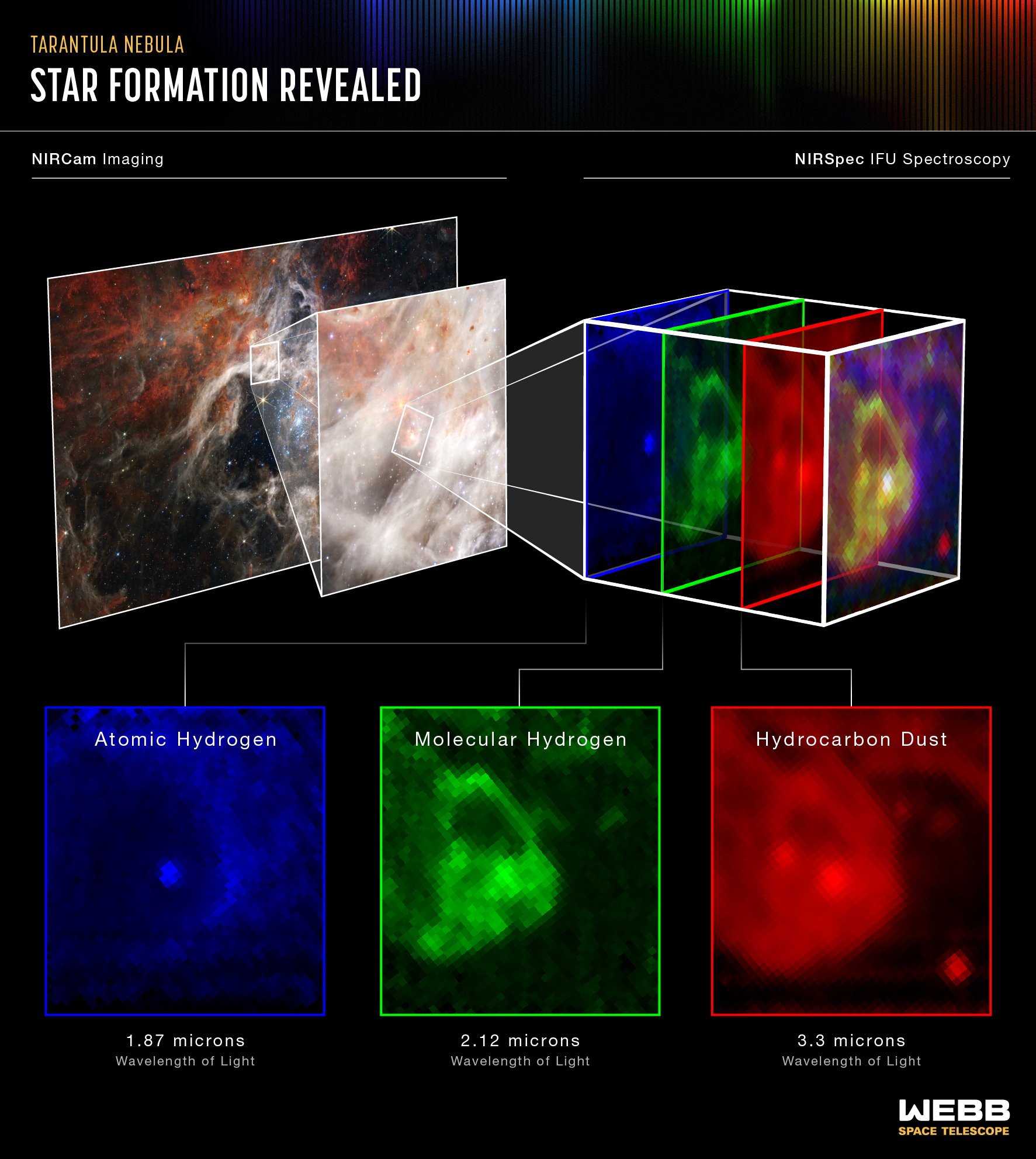
As spectroscopic imaging with JWST reveals, chemicals like atomic hydrogen, molecular hydrogen, and hydrocarbon compounds occupy different locations in space within the Tarantula Nebula, showcasing how varied even a single star-forming region can be. Atoms, ions, and molecules all exist throughout the cosmos.
Alcohols, acids, aldehydes, amines, and hydrocarbons abound in star-forming regions.

The existence of complex, carbon-based molecules in star forming regions is interesting, but isn’t anthropically demanded. Here, glycolaldehydes, an example of simple sugars, are illustrated in a location corresponding to where they were detected in an interstellar gas cloud: offset from the region presently forming new stars the fastest. Interstellar molecules are common, with many of them being complex and long-chained.
Cyanides and ethyl formate populate the galactic center.

This three-color composite shows the galactic center as imaged in three different wavelength bands by NASA’s Spitzer: the predecessor to the James Webb Space Telescope. Carbon-rich molecules, known as polycyclic aromatic hydrocarbons, show up in green, while stars and warm dust are also visible. A glow where our supermassive black hole sits is identifiable as well. The presence of ethyl formate was found in the gas cloud Sagittarius B2: the same molecule that gives raspberries their characteristic scent.
Denser, solid bodies, like asteroids, contain highly complex organics.

This image shows a fragment of the Murchison Meteorite, which fell in Australia in 1969. The Murchison Meteorite is particularly rich in amino acids, as analysis of the material inside has revealed approximately 80 amino acids so far, with left-handed and right-handed amino acids both represented abundantly. By comparison, only 22 amino acids participate in life processes on Earth, all of which are right-handed. With only one exception, all meteorite recovery operations have occurred over continents, not in the ocean waters.
Even Curiosity, prior to Perseverance, found organics on Mars.

NASA’s Curiosity rover found a number of fascinating properties throughout its (still ongoing) mission, and that includes a number of organic molecules, including seasonally-varying methane and sulfur-containing organic molecules. These are often taken to be potential indications of biological activity on Mars, but the mere presence of organics, alone, does nothing to rule out the probability of an abiotic pathway to produce what is observed.
All hitherto discovered Martian minerals can also be produced abiotically: without life’s involvement.
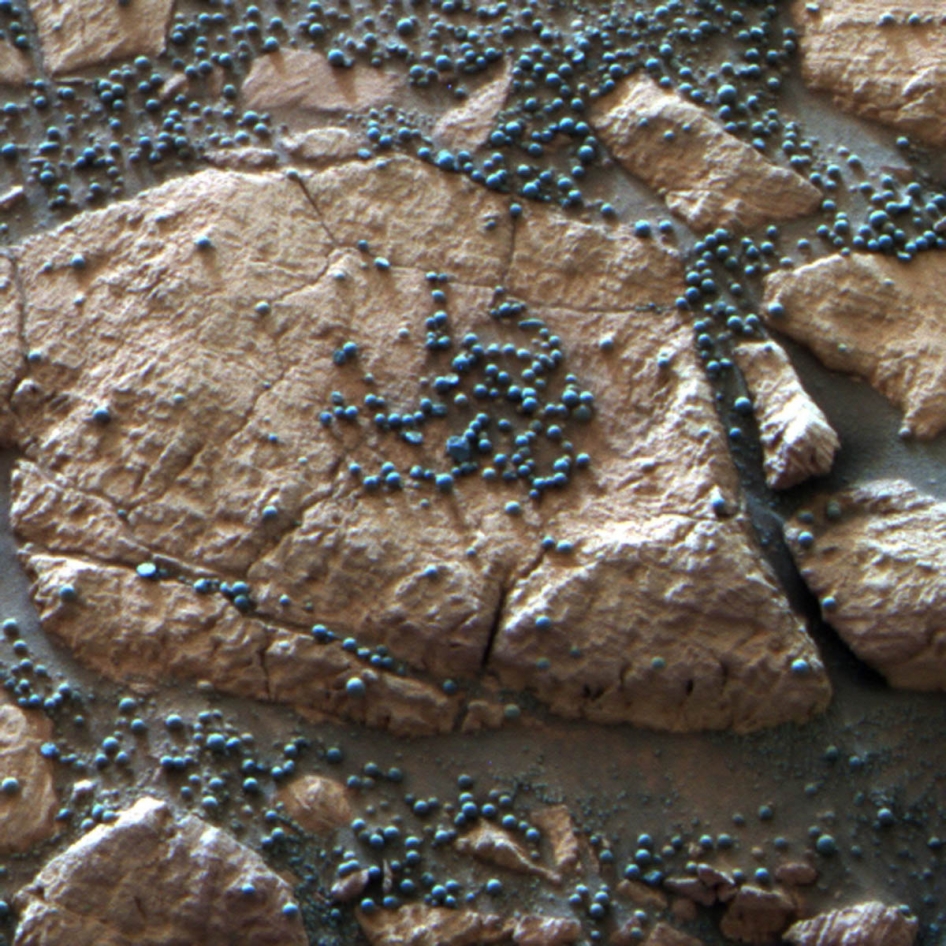
The hematite spheres (or ‘Martian blueberries’) as imaged by the Mars Exploration Rover Opportunity. This photograph was taken in the lowlands of Mars, at low elevations, where liquid water is thought to have once covered the now-exposed surface. A watery past is the most favored scenario that led to the formation of these spherules, with very strong evidence coming from the fact that many of the spherules are found attached together, which ought to occur only if they had a watery origin. Although similar spherules typically indicate life’s presence on Earth, an abiotic origin is favored for their presence on Mars.
We’ve only attained Level 1 on the Confidence of Life Detection (CoLD) scale.

The Confidence of Life Detection (CoLD) scale is a way for scientists to quantify how confident we are that a potential biosignature actually arose from the activity of life. Signatures like “methane on Mars” or the new features found inside Perseverance’s latest sedimentary rock (as well as ancient Mars Viking results) have only risen to Level 1 on this scale. Until we reach at least Level 4, ruling out abiotic pathways to creating the observed signatures, appropriate skepticism (including disbelief) of any claims of life’s involvement is warranted.
Even study lead Joel Hurowitz emphatically warned against premature overreactions.

NASA Perseverance scientist and SUNY Stony Brook professor, Joel Hurowitz, is shown at right, with a quote about being cautious about claiming the existence of biosignatures, even potential biosignatures, on Mars.
Mostly Mute Monday tells an astronomical story in images, visuals, and no more than 200 words.
Sign up for the Starts With a Bang newsletter
Travel the universe with Dr. Ethan Siegel as he answers the biggest questions of all.
Source link

